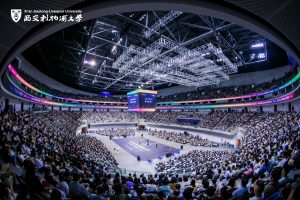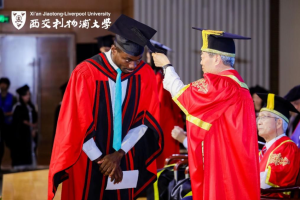20 Mar 2023
Recently, the Institute of Physics (IOP) announced the winners of the 2022 "China Top Cited Paper Award." The paper "A Catalog of Newly Identified Star Clusters in Gaia DR2" by Dr Xiaoying Pang, published in The Astrophysical Journal Supplement Series (ApJS), a cooperative periodical between IOP and the American Astronomical Society in 2019, was selected for this award.
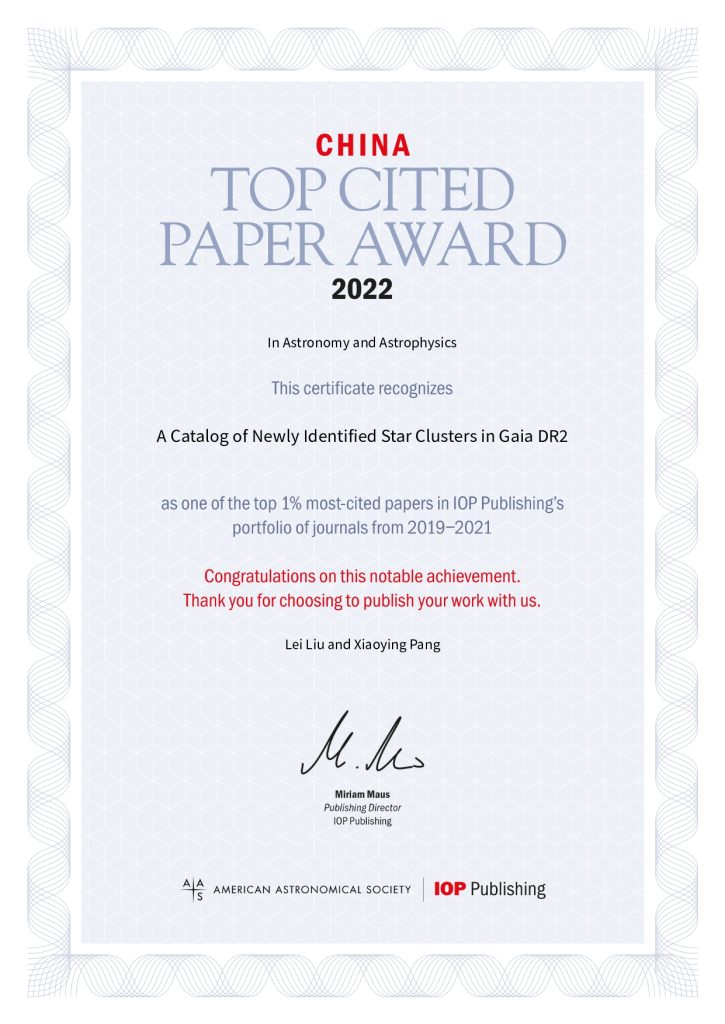
The 2022 awards were given to the top 1% of quoted articles published in IOP periodicals and its cooperative periodicals from 2019 to 2021, covering astronomy and astrophysics, biological science, environmental science, materials science, mathematics and physics. A total of 176 articles were selected for 2022 with 8,163 citations. The award is not only a recognition of the high quality of Dr Pang's article but also a strong endorsement of the global influence of Chinese researchers.
The paper catalogues the members of open clusters in the Milky Way Galaxy. According to Dr Pang, she used data from the European Space Agency's Gaia Space Telescope to discover new open clusters in the Milky Way Galaxy and to determine its structure. "This research allows us to understand better how clusters form in the Milky Way and the effects when they formed." She said.
When talking about her initial motivation for astronomy, Dr Pang said, "When I was a child, I would look up at the star-filled night sky and wonder where all these countless stars came from? Were there aliens on the other side of the planet? With these doubts, I joined the astronomy club in high school and used the telescope to observe planets and clusters years away. Although it did not meet the expectation of my family, I decided to research astronomy ever since."
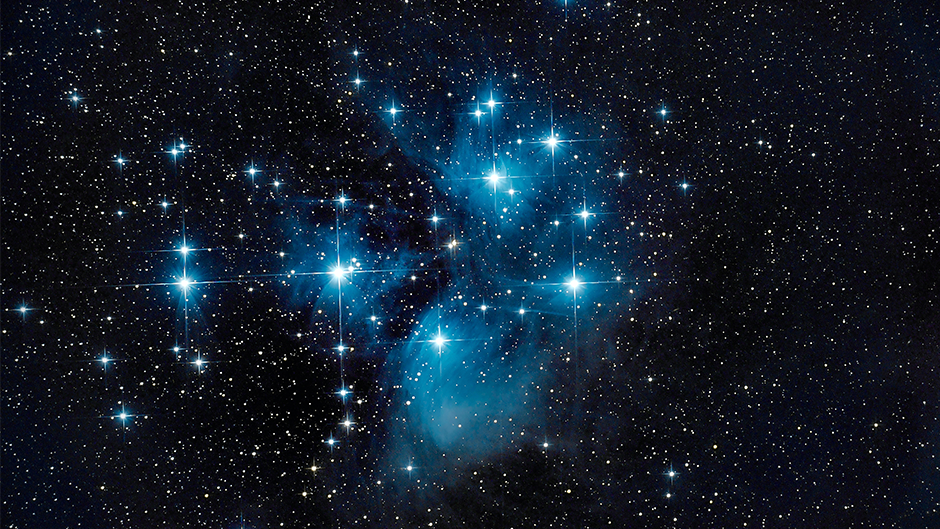
Nowadays, Dr Pang remains committed to researching the formation and evolutionary history of the galactic cluster in astronomy. In her published paper on open clusters, she mapped the three-dimensional pattern distribution of open clusters in the Solar Neighborhood by using the Gaia Space Telescope's third release of unprecedented high-precision location and motion measurements of stars.
In addition to the self-motion data provided by the Gaia Space Telescope, Dr Pang also obtained high-precision spectroscopic observations of the target open clusters from other large telescopes. In addition, she also used a machine learning neural network to determine cluster members and used the data from her thesis to build a 3D open clusters interactive website, which vastly facilitated scholars' research on open clusters.
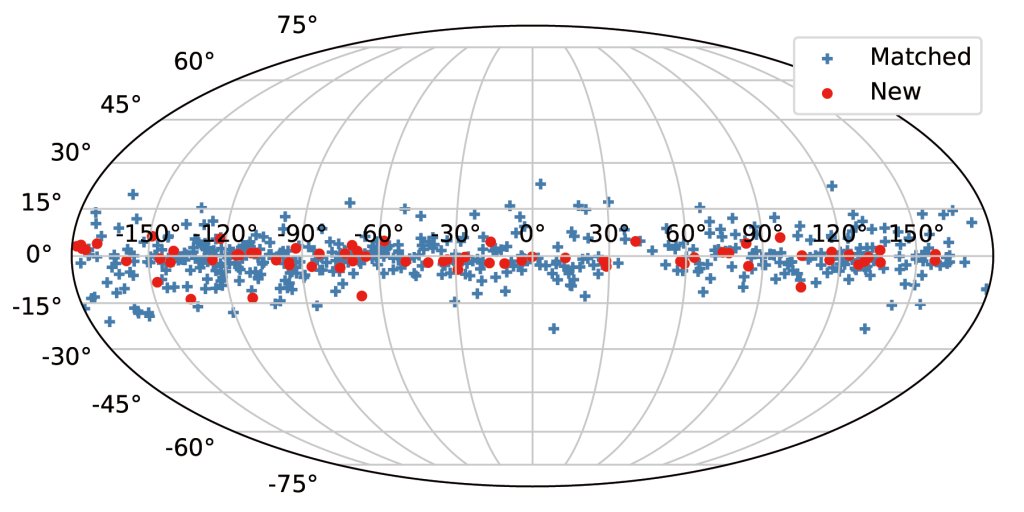
As for teaching, Dr Pang always implements XJTLU research-led concepts and vigorously develops innovative teaching models: she crosses over to create the astronomical science drama Space Meet Cute to explain the obscure theoretical knowledge of astronomical physics, plans and holds campus superhero design competition, encourage students to use physical knowledge to design their superhero image, and to explore the mysteries of the physical world.
"I want to inspire students to explore their interests after school by letting them 'enjoy astronomy' and discover their real interests," she said.
This year, with the theme "DigitALL: Innovation and technology for gender equality," UN Women is calling for better integration of women and girls into the digital age to create a safer, more accessible, inclusive, and equitable digital world. Dr Pang emphasized that the digital age provides unlimited opportunities for women to break through the shackles of feudalism and become unique and irreplaceable individuals.
Dr Pang said, "We must maintain the ability to think independently rather than becoming an appendage of others. Everyone is unique, and do not let others get in the way. It will be a blessing to focus on your interest area and go all out."
By Qinru Liu
Edited by Yunji Tao
Translated by Xiaoyu Wen
Photos courtesy of Dr Xiaoying Pang
20 Mar 2023
